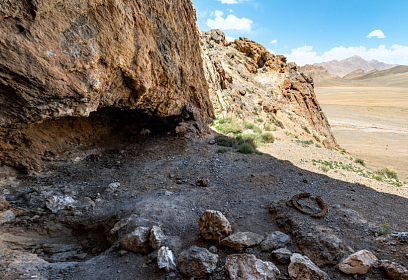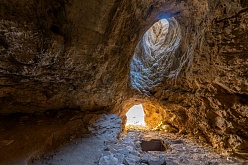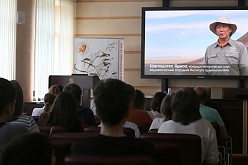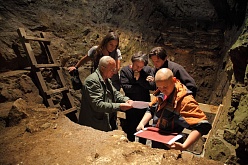Istyk Cave
- Description
- Links
- Video
Istyk Cave located in East Pamir is a unique scientific site for studying the early inhabitation of highlands by ancient people. The cave is positioned at 4,060 meters above sea level and is likely one of the most ancient stratified archaeological sites in the region.
By comparing with the research results obtained in adjacent regions, scholars can reconstruct the migration routes of ancient populations in Central Asia and adjacent territories. This can also provide insights into determining the time when Pamir was first inhabited by humans. The research allows for the identification of the glacial history of the region, which is directly linked to the time of human arrival. Herbivores inhabited the region after the glacier receded from East Pamir, followed by the arrival of ancient humans.
The presence of fire pits discovered during excavations indicates what fuel types ancient humans used and the way it depended on climate changes.
There is the Shakhty grotto in a valley located near Istyk Cave. Its walls preserve pictures made with red ochre by ancient humans. The images portray animals and humans disguised as birds, along with arrows flying towards animals. These depictions were likely associated with hunting magic. The Shakhty grotto situated at 4,200 meters above sea level is among the highest sites with cave drawings in the world. It is also included in our tour.

Location: Tajikistan, Gorno-Badakhshan Autonomous Region (East Pamir).
The archeological studies began in:: The cave was first discovered and explored from the late 1970s to the early 1980s by a Tajik expedition led by V.A. Zhukov.
Estimated layers age: Estimated layers age: 13 ka to modern times.
Human species: anatomically modern humans.
Study history:
The cave was first explored from the late 1970s to the early 1980s by an archeological expedition led by V.A. Zhukov. Its studies were resumed in 2018 by an international Tajik-Russian expedition of the Institute of Archeology and Ethnography of the Siberian Branch of the Russian Academy of Sciences (Novosibirsk, Russia) and the Institute of History, Archeology, and Ethnography of the Academy of Sciences of the Republic of Tajikistan (Dushanbe, Tajikistan). The new studies aim at reconstructing ancient ecology and ways of adaptation of ancient humans to extreme highland conditions.
The most well-known finds are:
Stone Age and Neolithic tools, bone needles and adornments, ancient fauna remains
-
Boar or bear? Rock art of the Shakhty rock-shelter (Eastern Pamir). Archaeological Research in Asia. 2022
-
A connection between the settlement dynamic of the Eastern Pamir and paleoclimatic changes in the late Glacial and Holocene. Theory and Practice of Archaeological Research. 2020
-
First Research Results at the Multilayered Site of Istikskaya Cave (Eastern Pamir, Tajikistan). Problems of Archaeology, Ethnography, Anthropology of Siberia and Neighboring Territories. 2019





